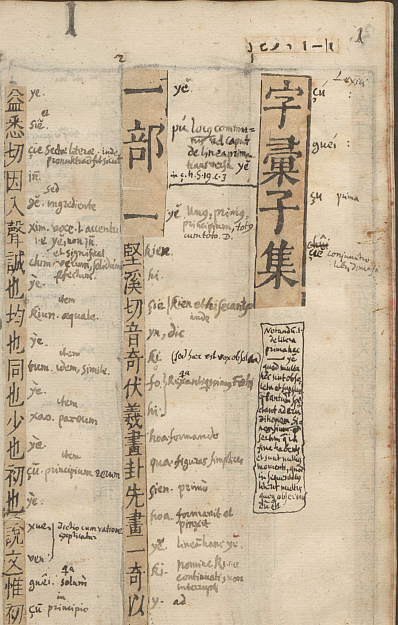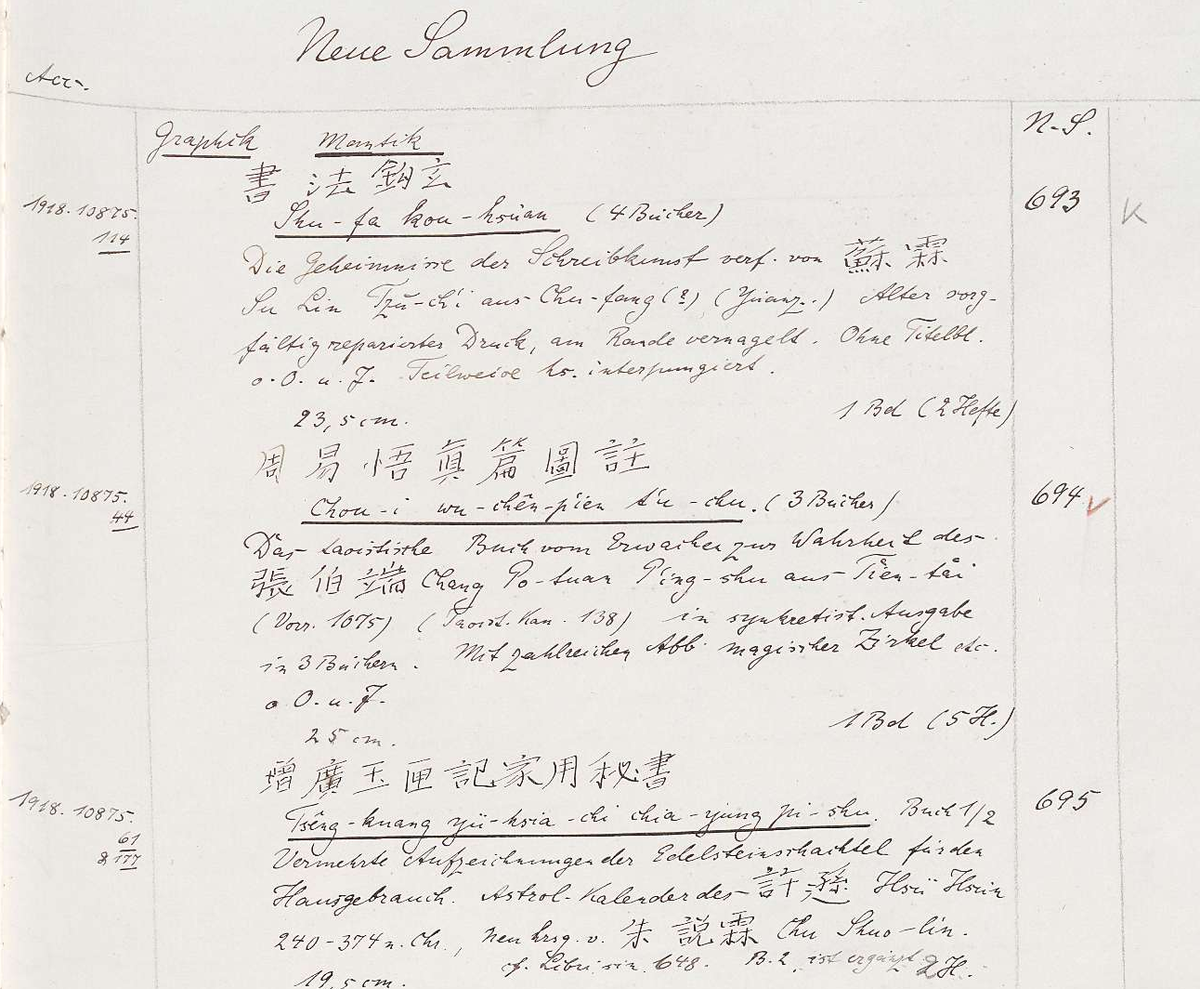East Asia
Libri sinici
Up to 1912, the Sinica and Mandschurica in the East Asia Collection of the Royal- and, later, Prussian, State Library were assigned the shelf marks Libri sin.. After that, on the occasion of an incipient large-scope and systematical acquisition, the shelf marks were changed to Libri sin. N.S. (Neue Sammlung, i.e., new collection). Altogether, there were 1603 Libri sin. shelf marks assigned to about 900 titles. Libri sin. N.S. 2049 is the last historical shelf mark of the New Collection (Libri sin. N.S. 1651-2049) and was assigned to a title published in 1935. Printed catalogues in bookform for both of these segments do exist, albeit their title entries are partially rather sketchy. They are available in digital format and can be accessed in the digital collections of the Staatsbibliothek (a structured access is possible via Search).
Essential parts from both shelf mark segments can be found in both Berlin and Krakow. Considering 309 titles in Berlin and 84 in Krakow, the digitisation project will make it possible to provide digital access for the general public to about one quarter of the historical Libri sinici (Libri sin. and Ms. sin.).
211 Libri sin. N.S. titles are kept safe in Krakow, about fifty percent of the former inventory have found their way back to Berlin. This means that after their virtual reunification, about two thirds of this old segment can be reconstructed.
The shelf marks Libri sin. N.S. started above all with works that had been purchased by Herbert Müller (1885-1966) between 1912 and 1914 on the basis of a list of desiderata for the Royal Library in Peking, Shandong, Henan and Shanghai. Herbert Müller had studied Law, Economics, Ethnology and Linguistics. He worked under F.W.K. (Friedrich Wilhelm Karl) Müller in the East Asia Department of the Berlin Ethnological Museum, the collection of which had also been acquired by the Royal Library; it is today kept in Krakow (cf. below). Herbert Müller undertook his trip to China during the years 1912-1914 on behalf of the Museum, mainly to collect archaeological materials.


